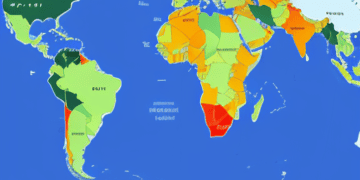In recent developments, Australia’s ratification of the Comprehensive and Progressive Agreement for Trans-Pacific Partnership (CPTPP) is poised to activate the agreement’s enforcement by year-end. This milestone coincides with the potential finalization of the Regional Comprehensive Economic Partnership (RCEP), projecting a significant influence on Asia-Pacific trade relations.
It’s essential to recognize that while the CPTPP and RCEP share aspirations for broader market access and enhanced private investment through regulatory reforms, China’s absence from the CPTPP creates complexities in its engagement with these trading arrangements. In this analysis, we explore the ramifications of these agreements on regional trade and delve into China’s stance concerning the CPTPP.
CPTPP and RCEP Overview Both the CPTPP and RCEP have analogous goals, aiming to facilitate greater market access and encourage investments among member states. The CPTPP evolved from the Trans-Pacific Partnership (TPP) involving 11 signatories after the US withdrew, preserving most TPP provisions while suspending select clauses, particularly related to intellectual property initially advocated by the US.
The CPTPP, reducing tariffs significantly and incorporating stringent non-tariff measures, stands as a high-standard free trade agreement. Conversely, the RCEP, encompassing 16 countries, including ASEAN nations and six others, covers a vast share of global GDP and population, surpassing the CPTPP in scale.
While the RCEP’s tariff reductions might not match the comprehensive coverage of goods and services seen in the CPTPP, it presents substantial opportunities by opening up access in nations with relatively higher trade barriers.
Coexistence and Economic Benefits Contrary to concerns about conflicting trade agreements causing impediments, research suggests a complementary relationship between the CPTPP and RCEP. Countries engaging in both stand to gain more significant economic advantages than individual participation in either initiative alone. This collective participation allows access to diverse markets across North America and Asia simultaneously.
Notably, countries like Singapore, Australia, Brunei, Japan, Malaysia, New Zealand, and Vietnam could witness enhanced GDP growth by engaging in both the CPTPP and RCEP, leveraging access to markets in multiple regions.
RCEP’s Role and Economic Impact The RCEP’s potential for larger economic gains, almost double in absolute terms compared to the CPTPP due to its broader participant base, highlights its substantial impact. Notably, countries within the RCEP exhibit higher tariff barriers than those in the CPTPP, emphasizing the significance of its trade liberalization measures.
China’s Position and Concerns China’s reluctance to join the CPTPP stems from apprehensions regarding its economic reforms. Compliance with the CPTPP’s rigorous standards would necessitate rapid economic transformation, conflicting with China’s gradual reform approach. Additionally, China’s stance on competitive neutrality concerning state-owned enterprises contrasts with the CPTPP’s stipulations.
The exclusion of China from the CPTPP risks trade diversion effects, potentially redirecting imports towards CPTPP member countries. This scenario could affect China’s export competitiveness due to higher tariffs imposed on its goods exported to CPTPP markets.
Future Perspectives and Trade Dynamics While invitations have been extended, China’s current disinterest in the CPTPP aligns with its focus on consolidating economic integration through the RCEP within Southeast Asia. The coexistence of the CPTPP and RCEP holds promise for fostering trade liberalization in the Asia-Pacific region, further solidifying its significance in global trade and economic growth.
In conclusion, the CPTPP and RCEP, while distinct in their approaches, collectively contribute to shaping regional trade dynamics and hold the potential to significantly impact global commerce in the coming years.
Catch the latest in supply chain news on The Supply Chain Report. Visit ADAMftd.com for free international trade tools.
#CPTPP #RCEP #AsiaPacificTrade #TradeLiberalization #GlobalCommerce #MarketAccess #EconomicIntegration #RegionalTrade #ChinaTradePolicy #FreeTradeAgreements #TradeDiversification #GlobalGDP #InvestmentReforms #ASEAN #TradePartnerships

















